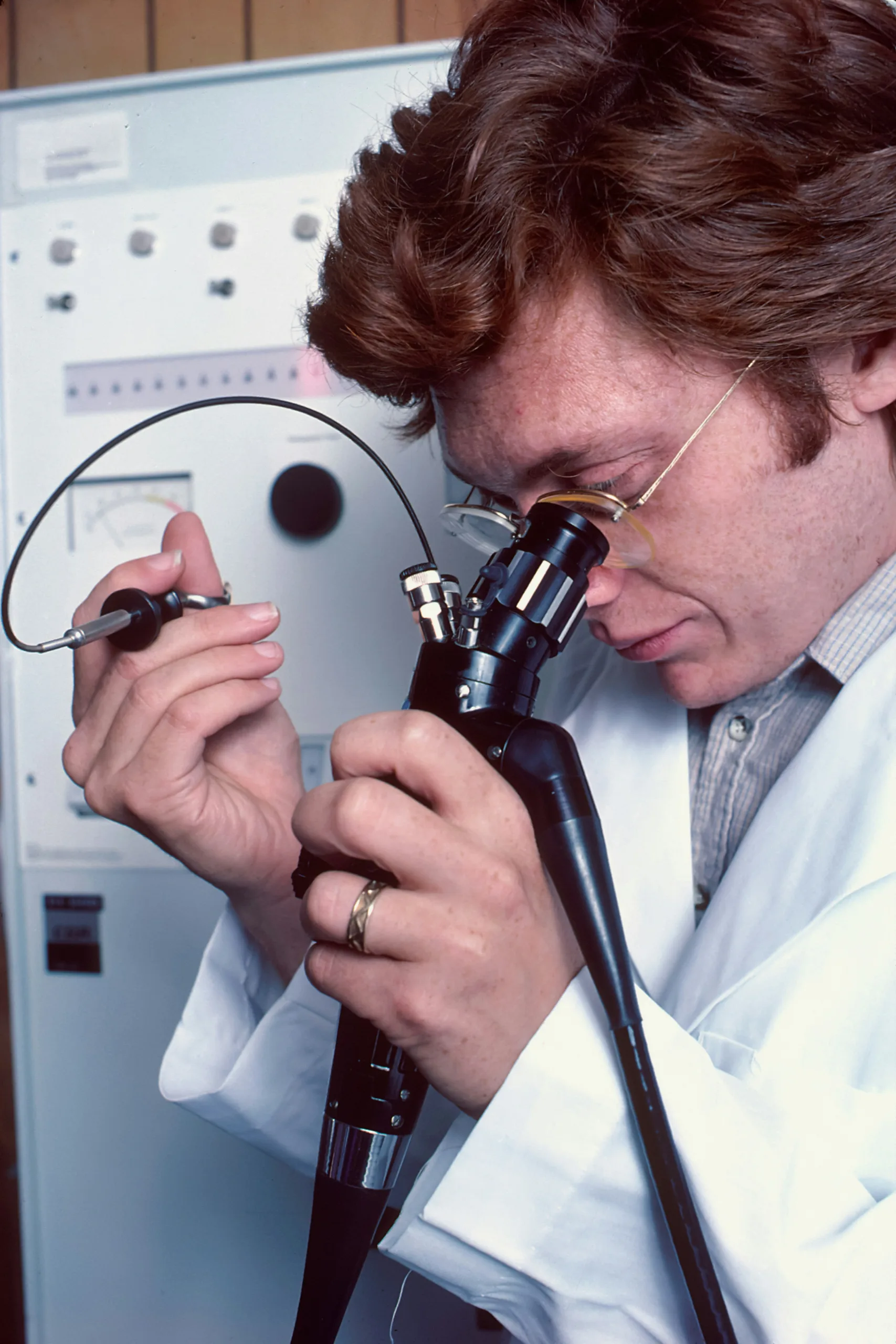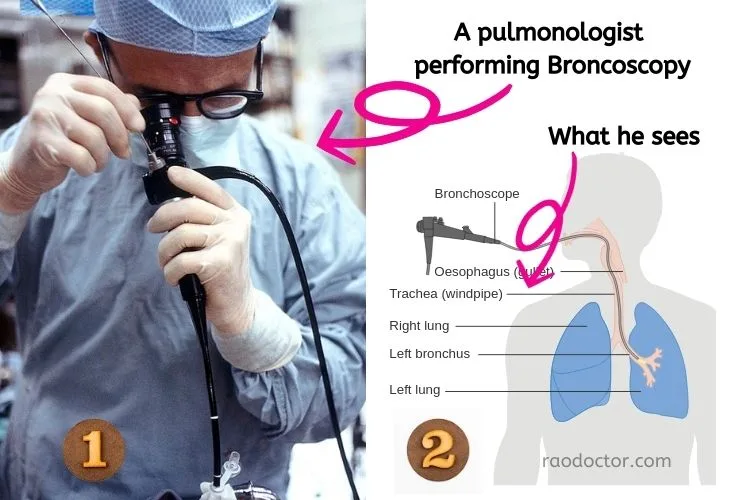Table of Contents
Understanding Bronchoscopy and Thoracoscopy: 2 valuable tools for Lower Respiratory Tract Diseases Diagnosis
Exploring Diagnostic Procedures for Respiratory Conditions:-
Listen to this article while scrolling down–
Introduction
When it comes to diagnosing respiratory conditions, medical professionals have a range of tools and techniques at their disposal.
In my previous article on ENT Endoscopy, I had mentioned at the end that my next article will be on endoscopy of the organs in the chest. So here we are, let’s explore them one by one.
Two commonly used procedures are bronchoscopy and thoracoscopy. In this article, we will delve into the world of these diagnostic procedures, explaining what they are, how they are performed, and the conditions for which they are used.
Whether you are a healthcare professional seeking to expand your knowledge or a patient looking for information, this article aims to provide a comprehensive overview of bronchoscopy and thoracoscopy.
What is Bronchoscopy?
Bronchoscopy is a minimally invasive procedure that allows healthcare providers to examine the airways and lungs.
It involves the use of a bronchoscope, a thin, flexible tube with a light and camera attached to it. This instrument is inserted through the nose or mouth and guided into the trachea and bronchi, providing a visual inspection of the respiratory system.
There are two main types of bronchoscopies:
- Flexible bronchoscopy and
- Rigid bronchoscopy
Flexible Bronchoscopy
This procedure [shown below] is the more common and least invasive of the two. It allows for greater maneuverability and access to smaller airways, making it suitable for both diagnostic and therapeutic purposes.
Rigid bronchoscopy
This procedure, on the other hand, is used in special cases where a more rigid instrument is required for interventions such as removing foreign objects or controlling bleeding.
Useful Resource-
- Bronchoscopy: Procedure, uses, risks, and recovery – Medical News Today
- https://www.yalemedicine.org/conditions/bronchoscopy
Conditions and Uses of Bronchoscopy
Bronchoscopy plays a crucial role in diagnosing and treating various respiratory conditions. Let’s explore some of the common conditions for which bronchoscopy is used:
Lung Cancer
Bronchoscopy is an essential tool in the diagnosis and staging of lung cancer. It allows healthcare professionals to visualize the tumor, collect tissue samples for biopsy, and determine the extent of the disease. Additionally, bronchoscopy can be used to place markers or guide radiation therapy for precise treatment.
Pulmonary Infections
In cases of suspected lung infections like pneumonia, bronchoscopy can help identify the causative agents. By collecting samples of mucus, fluid, or tissue from the lungs, healthcare providers can perform tests to determine the presence of bacteria, viruses, or fungi. This information is crucial for selecting appropriate antibiotics or antifungal medications.
Obstructive Lung Diseases
Bronchoscopy can aid in the diagnosis and management of obstructive lung diseases such as chronic obstructive pulmonary disease (COPD) [I will be covering this topic shortly in my subsequent blogs] and asthma. It allows for the assessment of airway inflammation, identification of potential obstructions, and evaluation of treatment effectiveness. Bronchoscopy can also be used to perform interventions such as bronchial thermoplasty, which helps reduce airway constriction in severe asthma cases.
Hemoptysis
Hemoptysis, or coughing up blood, can be a symptom of various respiratory conditions. Bronchoscopy can help identify the source of bleeding and guide interventions to control it. By visualizing the airways and lungs, healthcare professionals can identify lesions, tumors, or blood vessel abnormalities that may be causing hemoptysis.
Foreign Body Removal
Accidental inhalation or aspiration of foreign objects can occur, especially in children. Bronchoscopy enables healthcare providers to locate and remove these objects from the airways, preventing further complications and ensuring the patient’s safety.
What is Thoracoscopy?
Thoracoscopy, also known as video-assisted thoracoscopic surgery (VATS), is a minimally invasive procedure used to examine and treat conditions affecting the chest and lungs. It involves making small incisions in the chest wall and inserting a thoracoscope, a thin tube with a camera and surgical instruments, to visualize and access the thoracic cavity.
![Bronchoscopy and Thoracoscopy:2 Important tools to Diagnose LRTI 3 A diagram showing video assisted thoracoscopy[ vats]](https://raodoctor.com/wp-content/uploads/2024/05/Bronchoscopy-nci-vol-1950-300.jpg-1-jpg.webp)
Unlike bronchoscopy, which focuses on the airways and lungs, thoracoscopy provides a broader view of the chest cavity, including the pleura (lining of the lungs), diaphragm, and mediastinum. This allows for the evaluation and treatment of various conditions affecting these areas.
Useful Resource:
- American Cancer Society: Thoracoscopy | Thoracoscopic Surgery (VATS)
- Cleveland Clinic: Thoracoscopy Procedure Details and Recovery
Conditions and Uses of Thoracoscopy
Thoracoscopy is a versatile procedure with several applications in diagnosing and treating chest and lung conditions. Here are some of the common uses of thoracoscopy:
Pleural Effusion
Pleural effusion refers to the accumulation of fluid in the pleural space, the area between the lungs and the chest wall. This happens mostly in conditions like congestive heart failure, tuberculosis. etc.
Thoracoscopy can help identify the cause of the effusion, such as infection, malignancy, or heart failure.
It also allows for the drainage of the fluid and the insertion of a chest tube, if necessary, to relieve symptoms and prevent complications.
Pleural Biopsy
When there is suspicion of pleural disease, thoracoscopy can be used to obtain tissue samples for biopsy.
This helps in the diagnosis of conditions such as mesothelioma [this will be covered in a separate article in future], tuberculosis, or metastatic cancer [cancer that has spread from other parts of the body].
The ability to visualize the pleura directly and perform targeted biopsies increases the accuracy of the diagnostic process.
Lung Biopsy
Thoracoscopy can also be employed to obtain lung tissue samples for biopsy.
This is particularly useful in cases where the lesion is located deep within the lung or when a larger sample is required for analysis.
By using thoracoscopic guidance, healthcare professionals can ensure precise targeting of the affected area, increasing the diagnostic yield.
Lung Volume Reduction Surgery
For patients with severe emphysema, thoracoscopy can be used to perform lung volume reduction surgery.
This procedure involves removing damaged or diseased portions of the lung to improve lung function and alleviate symptoms.
By accessing the thoracic cavity through small incisions, thoracoscopy offers a less invasive alternative to traditional open surgery.
Mediastinal Masses
Thoracoscopy allows healthcare providers to evaluate and biopsy mediastinal masses, which are abnormal growths located in the mediastinum, the central compartment of the chest.
By obtaining tissue samples from these masses, healthcare professionals can determine their nature and guide further treatment decisions.
Benefits and Considerations
Both bronchoscopy and thoracoscopy offer numerous advantages over traditional surgical procedures.
By being minimally invasive, they generally result in shorter hospital stays, faster recovery times, and reduced post-operative pain.
These procedures also provide healthcare professionals with real-time visual information, allowing for more accurate diagnoses and targeted interventions.
However, it is important to note that like any medical procedure, bronchoscopy and thoracoscopy have potential risks and complications.
These may include bleeding, infection, adverse reactions to anesthesia, or damage to surrounding structures.
As attending physicians, it is essential for healthcare providers to carefully evaluate each patient’s condition and weigh the benefits against the risks before recommending these procedures.
Conclusion
Bronchoscopy and thoracoscopy are valuable tools in the diagnosis and treatment of respiratory conditions. They offer healthcare professionals a minimally invasive means of visualizing and accessing the airways, lungs, and chest cavity.
By understanding these procedures and their applications, both healthcare professionals and patients can make informed decisions regarding their respiratory health.
Whether it’s identifying lung cancer, managing obstructive lung diseases, or evaluating pleural effusions, bronchoscopy and thoracoscopy play vital roles in improving patient outcomes and overall respiratory care.
Final words
Finally, as mentioned in my earlier article, my next article will be on Sleep Apnoea, a condition that can cause multiple health issues such as heart attack, high blood pressure and stroke.
If you find this article useful, do sign up for notifications to get notified whenever a new article is published on this website.
Adios.


